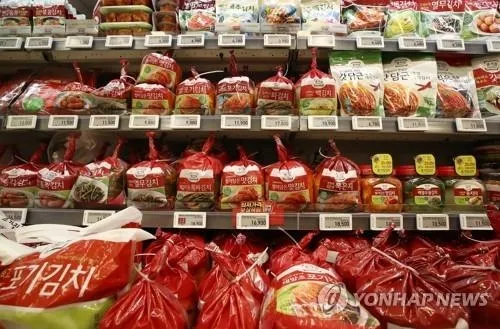Why Did South Korea's Food Exports to the U.S. Decline in July?

Synopsis
Key Takeaways
- Food exports from South Korea to the U.S. fell by 6.7% in July.
- Tariffs imposed by Washington significantly impacted these exports.
- Exports of instant noodles and snacks saw steep declines.
- Cumulative exports grew by 21.3% in the first seven months of the year.
- The South Korean government is taking proactive measures to support exporters.
Seoul, Aug 20 (NationPress) The food exports from South Korea to the United States experienced their first annual drop in approximately two years during July, primarily due to Washington's extensive tariff policies, according to data released on Wednesday.
Last month, the nation exported US$139 million worth of agricultural products and food items to the U.S., reflecting a 6.7 percent decrease compared to the same month in the previous year, as reported by the Korea Trade Statistics Promotion Institute.
This marks the first decline since May 2023 in South Korea’s food exports to the U.S., as per Yonhap news agency.
Breaking down the exports, shipments of instant noodles, or “ramyeon” in Korean, one of the vital export products, fell by 17.8 percent year-on-year to $14 million.
Exports of snacks saw a more significant decline of 25.9 percent, totaling $20 million7.2 percent and 13.4 percent, respectively.
For the period from January to July, cumulative exports to the U.S. increased by 21.3 percent compared to the same timeframe last year. However, this growth rate has sharply declined from a 27 percent increase observed in the January-June period.
Industry experts have partially attributed this slowdown to companies stockpiling goods ahead of the tariff implementation deadline set by the Trump administration, which announced a 15 percent tariff on all South Korean goods starting August 7.
This panic buying was particularly evident in instant ramyeon, which saw shipments to the U.S. surge by 58.7 percent year-on-year in June.
Market analysts predict that food exports may drop further as U.S. consumers begin to cut their spending due to a bleak economic outlook.
“Local businesses operating in the U.S. are feeling the pinch from a downturn in consumer expenditure,” stated Kang Eun-ji, an analyst at Korea Investment & Securities Co., pointing out that sales of major food corporations, such as CJ CheilJedang Corp., fell in the second quarter.
In response to the situation, Agriculture Minister Song Mi-ryung is set to hold a meeting later on Wednesday to discuss strategies to enhance food exports.
This meeting, which will be the third of its kind, aims to outline the government's support initiatives for export companies while collecting feedback from relevant firms and agencies, according to the ministry.









